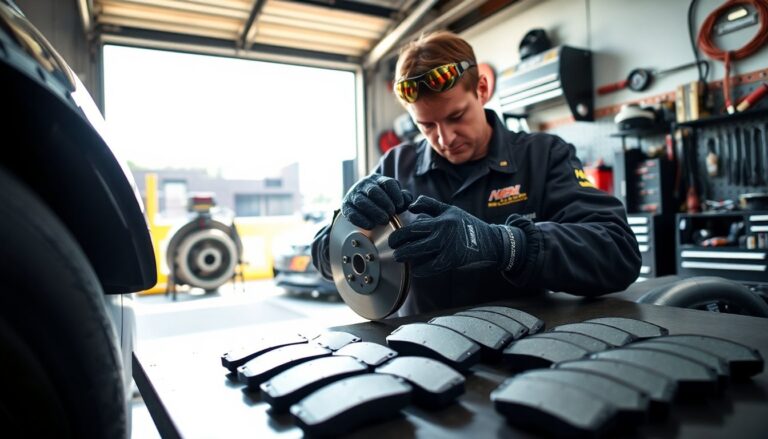Argomenti trattati
The world of NASCAR racing is not just about speed; it also involves a deep understanding of the regulations that govern the sport. Among the various elements that teams focus on, the choice of brake pads is a fascinating aspect that can significantly impact performance. As teams prepare for competition, particularly in critical events like the race at Phoenix, many opt to experiment with different brake pad compounds, strategically navigating the strict rules of the sport.
The introduction of the NASCAR Next Gen car has brought uniformity in many components, making it challenging for teams to customize key systems like suspension or brakes. However, the flexibility in selecting brake pad materials allows teams to leverage this aspect to gain a competitive edge. This article delves into how top teams employ this strategy to optimize their performance on the track.
Understanding the role of brake pads in NASCAR
Brake pads in the NASCAR environment serve a critical function. They are designed to work under extreme conditions, where the demands of high-speed racing can lead to significant wear and tear. The brake pad compounds teams choose can affect not only the stopping power of the car but also its handling characteristics. By mixing and matching different compounds, teams aim to enhance their vehicle’s braking performance while remaining compliant with NASCAR regulations.
Strategic experimentation for competitive advantage
As teams gear up for races, they often conduct rigorous testing to identify which brake pad combinations provide the best results. For instance, during practice sessions, teams will evaluate the performance of various brake pads to gather data on how each compound interacts with the car’s overall dynamics. This experimentation is crucial, as it can lead to significant improvements in lap times and driver confidence.
Moreover, the ability to adapt brake settings allows teams to fine-tune their vehicles based on specific track conditions. Teams will often analyze data from previous races to determine the optimal brake pads for particular tracks, making adjustments that can mean the difference between victory and defeat.
Challenges faced by NASCAR teams
Despite the advantages of customizing brake pads, teams face numerous challenges in implementing these strategies. The primary concern revolves around reliability. With the intensity of racing, brake systems must perform consistently throughout the race. If a team chooses an aggressive brake pad compound that wears down too quickly, it could lead to catastrophic failures during crucial moments of a race.
Additionally, the intricate balance between speed and control must be maintained. Drivers rely heavily on their brakes for turning and stabilizing the car. If a team opts for a brake pad that offers exceptional stopping power but compromises grip or stability, it could lead to handling issues that jeopardize the driver’s ability to navigate turns effectively.
The impact of regulations on brake pad selection
NASCAR’s strict regulations on parts and components mean that teams must be innovative within given constraints. The rules allow for some flexibility regarding brake pads, which teams exploit to stay competitive. Each team approaches the challenge differently, focusing on their unique strengths and weaknesses to optimize their brake strategy.
For instance, it is common for teams to use different brake pad compounds during different phases of a race or under varying track conditions. This adaptability showcases the teams’ engineering prowess and their understanding of the intricate dynamics of racing.
Looking ahead: The future of brake technology in NASCAR
As technology continues to evolve, the future of brake systems in NASCAR is likely to see even more advanced materials and designs. The ongoing quest for better performance and safety will drive innovation in brake pad technology. With each race season, teams will undoubtedly push the envelope, seeking out new compounds that can provide a competitive advantage while adhering to the sport’s regulations.
Ultimately, the strategic use of brake pads represents a compelling aspect of NASCAR racing. Teams that can effectively navigate these regulations through careful selection and testing of brake components will continue to find themselves at the forefront of the competition.

